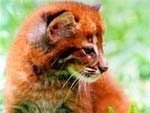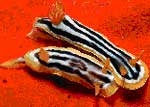According to National Geographic, as of 2023, our planet is home to 8 species of bears. The smallest among them is the sun bear, which originates from Southeast Asia.
As an omnivorous species, the diet of the sun bear includes ants, bees, beetles, honey, termites, seeds, and various fruits; as well as vertebrates like birds. They breed year-round, typically giving birth to one or two cubs, which stay with their mother for about three years.
Wildlife biologist and founder of the Bornean Sun Bear Conservation Centre (BSBCC), Wong Siew Te, told CNN: “Most bear species can stand on their hind legs, but the sun bear can stand taller and straighter than other bear species. Female sun bears can even carry their cubs with both front paws and walk on their hind legs, very similar to humans, which I guess is why people get confused.”
In the wild, their standing posture frees their front claws, allowing sun bears to access food like fruits, extract honey from hives, and dig for termites. They also possess a 30 cm long tongue to gather food, the longest of any bear species. Sun bears stand to survey their surroundings and intimidate other animals like tigers by displaying their striking chest fur as a warning signal. This upright position enables them to smell further.
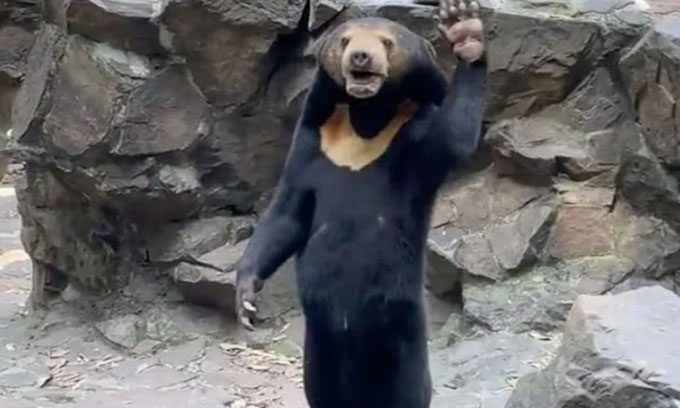
Sun bear waving while standing upright on two legs. (Photo: Independent).
Female sun bears also stand on two legs while carrying their cubs. This helps the mother bear detect predators more easily and move her cubs to safety. Recently, a captive sun bear named Angela gained fame on social media after standing upright and waving to visitors at the Hangzhou Zoo in China. Its shape, posture, and behavior resembled a human so closely that many people mistook it for a person in disguise.
The exact reason why sun bears wave is still undetermined, but they may be attempting to communicate. A study published in the journal Nature in 2019 found that captive sun bears have excellent communication skills and can mimic each other’s facial expressions to build social bonds. Biologists at the University of Arizona suggest that sun bears evolved to become master climbers, and their dexterity allows them to wave simply because they can.
Sun Bears Spend Most of Their Lives in Trees
The sun bear is considered the smallest of all current bear species. Adult sun bears weigh between 27 to 68 kg. Their tails range from 4 to 6 cm in length.
Another distinct characteristic of sun bears is that they spend most of their lives in trees. They even sleep among the branches, often feeding on termites and honey using their long, slender tongues. Based on their diet, they are sometimes nicknamed “honey bears.”
Sun bears are also primarily nocturnal—another difference from their bear relatives, who usually are active during the day or alternate based on the season.
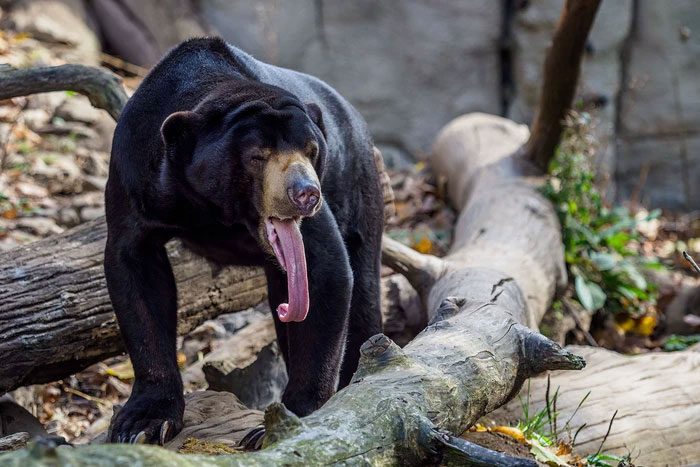
Sun bears have a stocky build, with large feet, strong curved claws, small round ears, and short muzzles. Their fur is typically solid black but can range from gray to red.
When standing, the sun bear reveals a layer of skin resembling a person wearing baggy clothing on the lower half, but according to sun bear expert Wong Siew Te, this is merely a distinct aspect of sun bear physiology. Common predators of sun bears include snakes, tigers, and large raptors, and as a protective mechanism, sun bears have very thick skin.
“The excess skin is a crucial adaptation for sun bears,” and it has evolved in that way to avoid predators. As Wong explained to CNN, “When environmental conditions become harsh and food is scarce,” that thick skin becomes loose and forms folds.
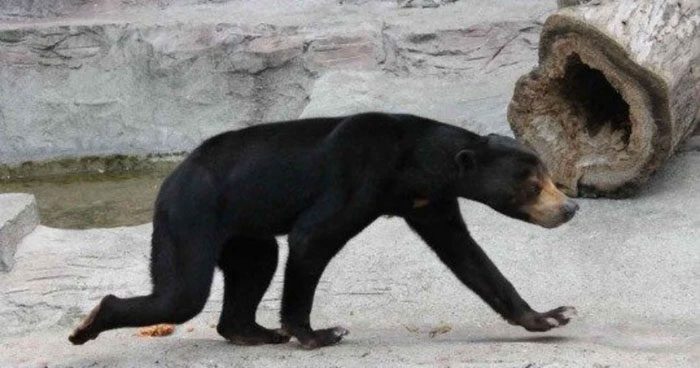
As the most arboreal of all bear species, sun bears often sunbathe or sleep in trees 2 to 7 meters above the ground. Sun bears tend to be solitary but sometimes appear in pairs (such as a mother bear with her cubs). They do not seem to hibernate, possibly due to the availability of food year-round.
Sun Bear Species is Threatened
One characteristic that sun bears share with their relatives is that the species is critically endangered. Like many other animal species, deforestation has greatly impacted sun bears, and the illegal trade of bear bile has contributed to their declining numbers.
For centuries, bear bile has been used in traditional Chinese medicine to treat or cure various ailments. Consequently, many sun bears have been captured or confined for bile extraction for this purpose.
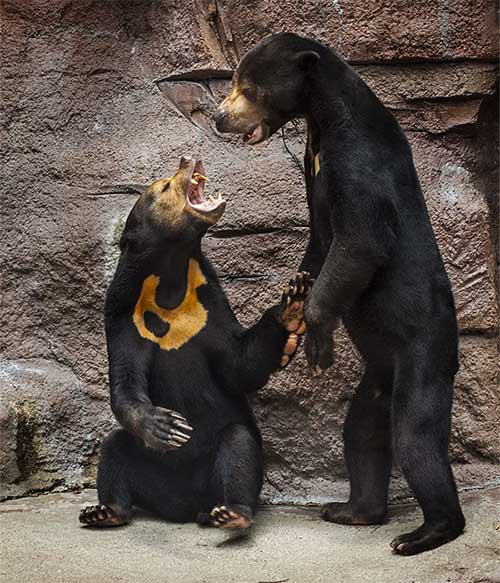
Sun bears, primarily found in the tropical rainforests of South Asia and Southeast Asia; including India, Bangladesh, Brunei, Cambodia, Indonesia, Laos, Malaysia, Myanmar, Thailand, and Vietnam. Sun bears are approximately 1.2 meters long and about 0.7 meters high—making them the smallest species in the bear family.
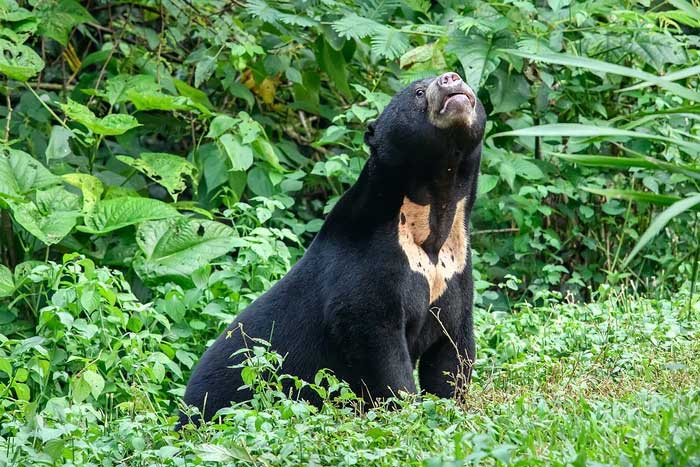
The two main threats to sun bears are habitat loss and commercial hunting. These threats are not evenly distributed throughout their range. In areas where deforestation occurs, they are primarily threatened by habitat loss and forest degradation caused by logging for development, unsustainable harvesting, illegal logging, and wildfires. Commercial hunting is a significant threat in most countries.
In surveys conducted in Kalimantan from 1994 to 1997, interviewees admitted to hunting sun bears and noted that bear meat is consumed by indigenous people in some areas of Kalimantan. Sun bears are one of the three main bear species targeted for bear bile trade in Southeast Asia and are kept in bear farms in Laos, Vietnam, and Myanmar.
Sun bears are classified as vulnerable in the International Union for Conservation of Nature’s (IUCN) Red List due to habitat loss and hunting. They are poached for bile used in traditional medicine and for their paws as food.








































